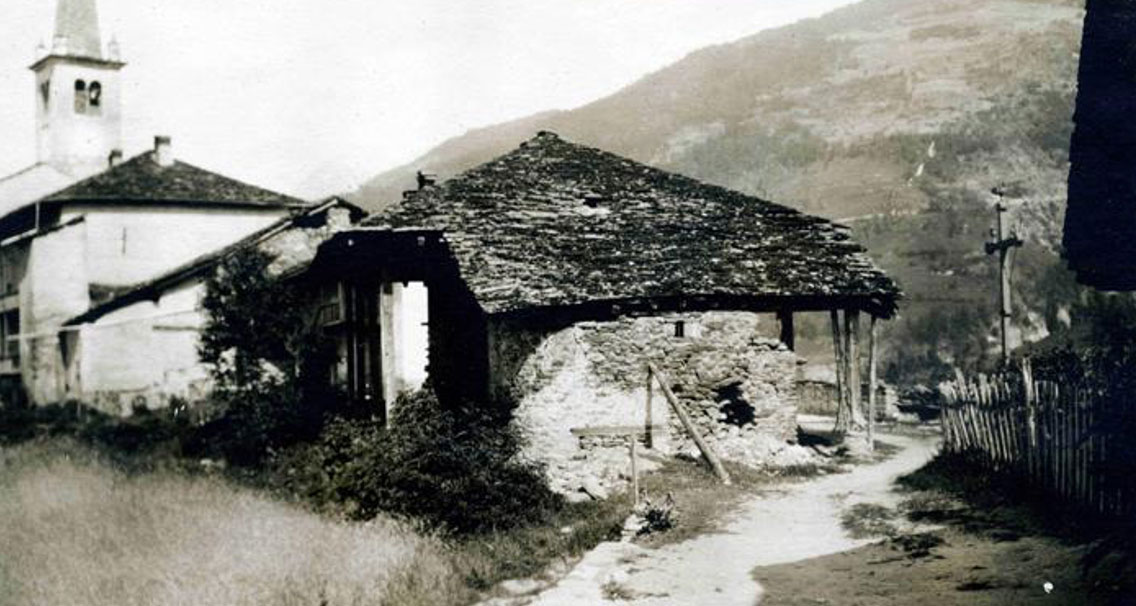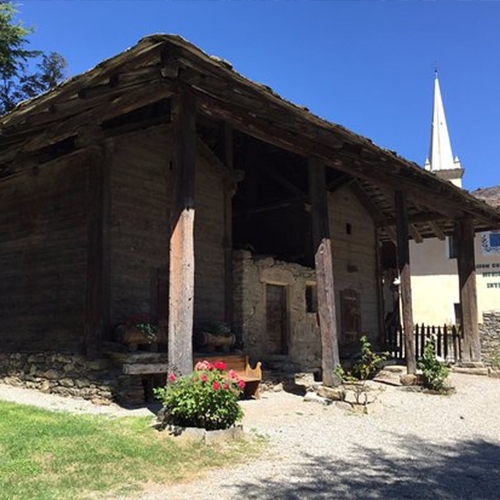
There is a magnificent structure, in wood and stone, close to the Castle that was once used by the Sarriod family as a barn. A small door is the entrance to the basement, composed by two rooms, once provided with airshaft windows, now completely buried. Probably realized near the second half of 15th century, this complex has been built on a previous structure, definitely before the 14th century. In fact, thanks to a parchment dated 1387, concerning the trial for a theft of wheat and wool in a granary of Sarriod property, involving the nobleman Eustache Sarriod and Vuillermet Gontar, we deduce it could possible be the same construction. The Granaries, restored at the beginning of the last century, in spite of its simple dimensions, represent today the best preserved sample of Middle Age wooden architecture in Aosta Valley.

Here below you will find the results of an analysis regarding the wooden parts of the building, made by “Laboratoire romand de dendrocronologie” of Moudon (Switzerland) on June 26th 2006.
“The analysis made on an ancient beam of the basement, between the western granary and the central part, proves that there was a preexisting construction, dating back to the end of the 14th century.“
Six samples have been collected from the western granary, but only four of them can be considered reliable: the trees used to build it had been chopped down between autumn/winter of 1432/33 and autumn/winter of 1435/1436.
All the six larch samples collected from the eastern granary resulted reliable. The chronological sequence is quite clear: the trees were felled between 1441 and 1443. That means that the eastern granary is more recent than its twin granary.


Out of eight samples only four are valid: 1465/1466.
Out of seven samples analyzed, (larch and spruce), six gave reliable results: two samples date from 1465; the other four date from 1471 to 1473.
“These analyses show clearly how that extraordinary structure has been built, in different phases.” Claudine Remacle.